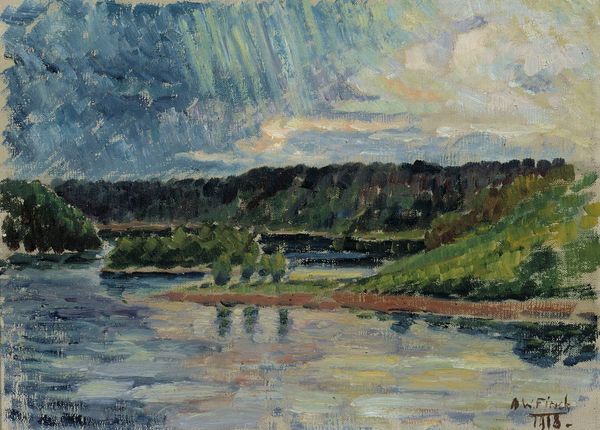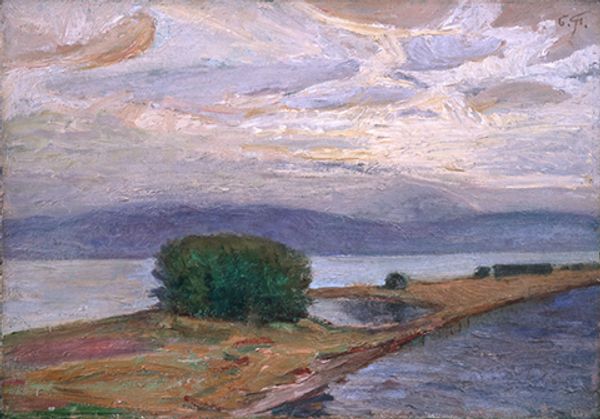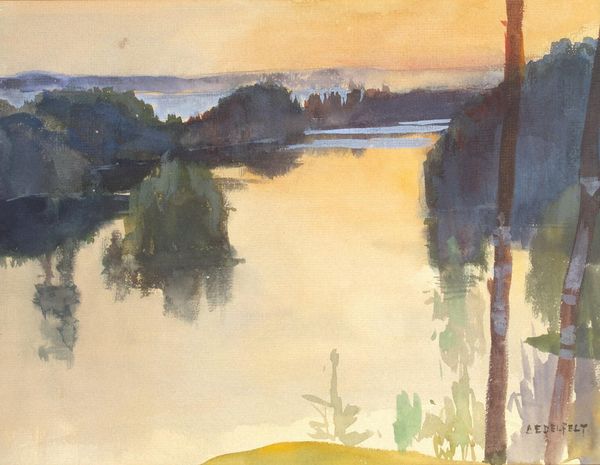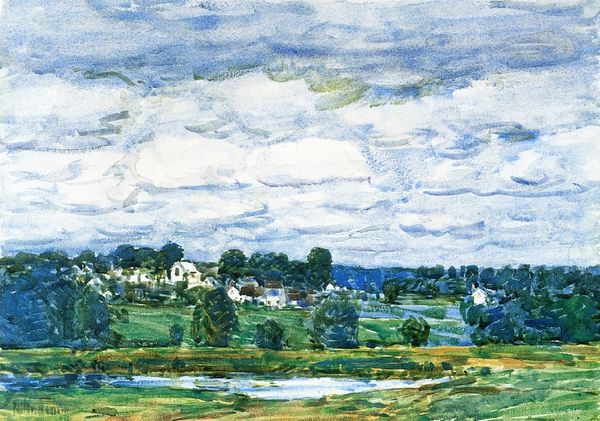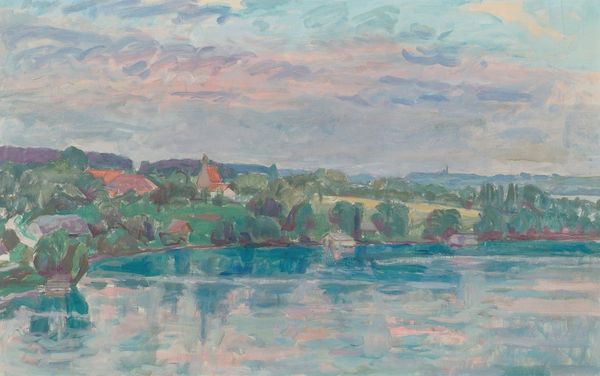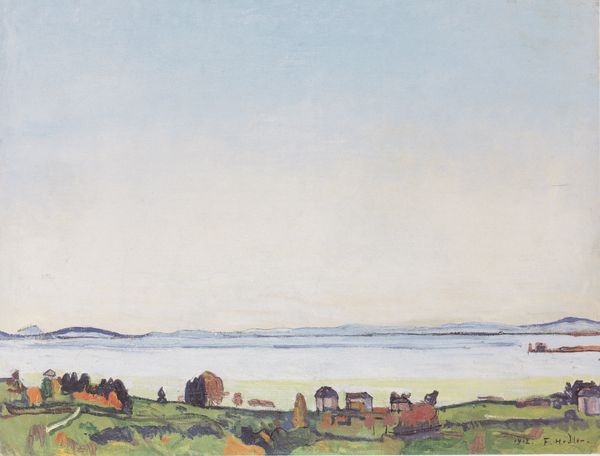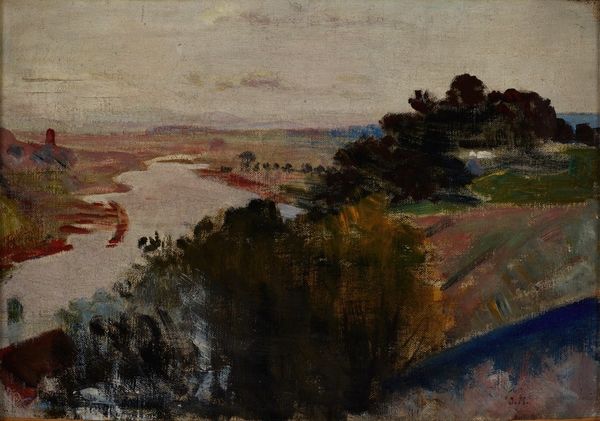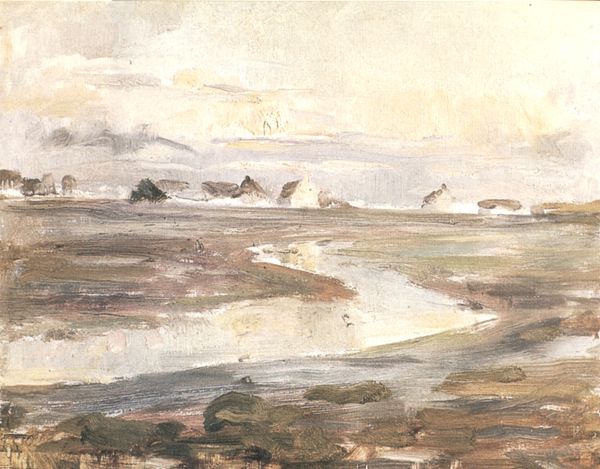
Copyright: Public domain
Editor: We're looking at Robert Henri's "Ship in the Bay" from 1903, an oil painting. The overall feeling is one of slightly brooding calm, like just before or after a storm, but with such active brushwork. How do you interpret this work, given the… almost turbulent, yet restrained feel? Curator: The brooding you sense is palpable, isn't it? Note the contrast of the dark clouds versus the luminosity on the sails. This contrast evokes the ship as a visual symbol for hope, a vessel navigating through life’s challenges. Look closer – Henri repeats shapes. Notice the curves of the clouds echoed in the water and land. This suggests a symbolic interconnectedness, doesn’t it? Editor: I see that now, how the land and sky seem to mirror each other. But the darks are quite dominant – is there a reason he may have emphasized those shadows? Curator: Shadows often symbolize the unconscious, the unknown. Given the context of the early 20th century, a time of rapid change and uncertainty, these dark, dominant clouds might represent a collective anxiety or the shadow of industrialization looming over a more pastoral past. What do you think about how the artist repeats and inverts this cloud in the water? Editor: That's fascinating, because it almost feels like two worlds connected by the ship as a point of crossing, but that perhaps they are on opposite sides of some kind of great change. That’s quite evocative. I will always see the relationship between ship and sky now! Curator: Indeed. Considering the repeating image and context enriches our reading. This painting becomes a poignant reminder of humanity’s relationship with nature, challenge, and our enduring hope to voyage onward.
Comments
No comments
Be the first to comment and join the conversation on the ultimate creative platform.
